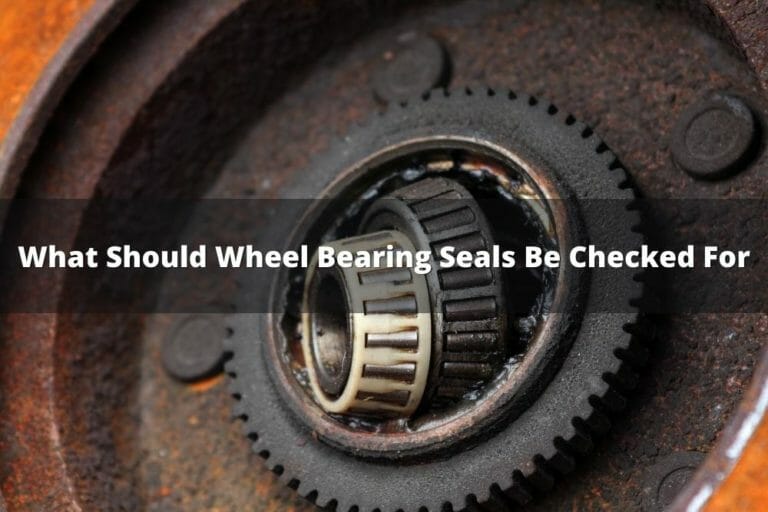Should Wheel Bearings Be Replaced In Pairs

The question of whether to replace wheel bearings in pairs is a common one, sparking debate amongst DIY mechanics, seasoned professionals, and even within online automotive communities. While it might seem like a cost-saving measure to only replace the failed bearing, the consensus leans heavily towards replacing both bearings simultaneously. This article delves into the reasons why, providing a comprehensive look at the technical and practical considerations involved.
Understanding Wheel Bearing Failure
Before exploring the "pair replacement" argument, it’s crucial to understand how wheel bearings fail. A wheel bearing is a critical component that allows a wheel to rotate smoothly and with minimal friction. They are typically either ball bearings or tapered roller bearings, housed within a hardened steel race. Over time, factors like wear and tear, contamination (water, dirt), impact from potholes, and improper installation can lead to bearing degradation. This degradation manifests as increased noise (humming, grinding), looseness in the wheel, and even vibrations felt through the steering wheel.
When one wheel bearing fails, it's a strong indicator that the other bearing on the same axle is likely approaching its end of life as well. Both bearings have been subjected to similar conditions, mileage, and stress. Replacing only the failed bearing leaves the other bearing potentially vulnerable to imminent failure, potentially leaving you stranded again soon.
The Arguments for Pair Replacement
Here's a breakdown of the key reasons why replacing wheel bearings in pairs is generally recommended:
- Symmetrical Wear: As mentioned, wheel bearings on the same axle experience similar wear patterns. If one bearing has failed, the other has likely undergone similar stress and is nearing failure. Replacing both addresses this symmetrical wear pattern proactively.
- Cost Savings in the Long Run: While the initial cost of replacing both bearings might seem higher, it can actually save you money in the long run. Consider the labor cost associated with replacing a single bearing. If the other bearing fails shortly after, you'll be paying for labor again. Replacing both at once minimizes these costs.
- Improved Vehicle Handling and Safety: A worn wheel bearing, even if not yet audibly failing, can affect vehicle handling and braking performance. Replacing both bearings ensures consistent performance on both sides of the axle, contributing to improved stability and safety. This is especially important in critical situations such as emergency braking or sharp turns.
- Reduced Risk of Imbalance: Replacing only one bearing can create an imbalance in the wheel system, potentially leading to uneven tire wear and further stress on other suspension components. Replacing both ensures that the wheel system operates with balanced loads and consistent performance.
- Alignment Considerations: In some vehicles, replacing a wheel bearing may necessitate a wheel alignment. If you replace only one bearing and the other fails soon after, you'll need to get another alignment. Replacing both bearings at the same time only requires one alignment, further saving money.
Real-World Examples and Expert Opinions
Consider a scenario: A customer brings their car to a shop complaining of a humming noise. The mechanic diagnoses a failed front left wheel bearing. While tempting to replace only the left bearing, a reputable mechanic will advise replacing both front wheel bearings. They understand that the right bearing has likely experienced similar stress and is at risk of failing soon. Furthermore, they might explain that if the car requires an alignment after the wheel bearing replacement, it's more cost-effective to do both bearings at once to avoid repeat alignment costs.
Automotive professionals often emphasize that preventative maintenance is key to long-term vehicle health. Replacing wheel bearings in pairs falls under this category. It's a proactive measure that can prevent future breakdowns, save money, and ensure optimal vehicle performance.
Exceptions to the Rule
While replacing in pairs is generally the best practice, there might be rare exceptions. For example, if a wheel bearing failure is directly attributable to a specific incident (e.g., hitting a curb hard), and the other bearing shows absolutely no signs of wear or damage after a thorough inspection, replacing only the damaged bearing *might* be considered. However, this is a less common scenario, and even in such cases, erring on the side of caution and replacing both is often the better choice.
Conclusion
In conclusion, while the initial cost might be slightly higher, replacing wheel bearings in pairs is generally the recommended practice. It's a proactive approach that addresses symmetrical wear, saves money in the long run, improves vehicle handling and safety, and reduces the risk of future breakdowns. Unless there are very specific and unusual circumstances, prioritize replacing both wheel bearings on the same axle to ensure optimal performance and longevity of your vehicle's wheel system. Always consult with a qualified mechanic for personalized advice based on your vehicle and driving conditions.
